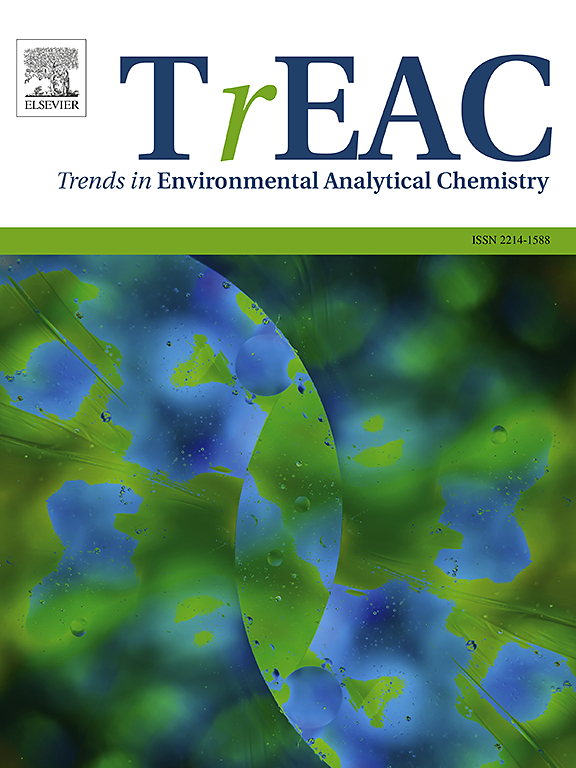人工智能和机器学习用于比色检测:技术、应用和未来前景
IF 13.4
2区 化学
Q1 CHEMISTRY, ANALYTICAL
引用次数: 0
摘要
快速、低成本地检测污染物和质量标记在医疗保健、食品安全、环境监测和工业应用中至关重要。虽然传统的实验室方法仍然准确,但它们通常速度慢、价格昂贵,而且不适合在护理点或现场使用。比色生物传感提供了一种简单、经济、直观的替代方案;然而,它对人类主观解释的依赖引入了偏见和限制再现性,特别是当在不同的照明条件或设备类型下出现细微的颜色变化时。人工智能(AI)、机器学习(ML),尤其是深度学习(DL)的最新进展,通过实现自动化、鲁棒性和高度精确的分析,将这些限制转化为机会。卷积神经网络(cnn)等模型和ColorNet等专业架构可以直接解释原始图像,提取复杂特征,并适应各种环境,从而提高准确性和可扩展性。通过智能手机集成、边缘计算和可解释的人工智能,这些系统现在被部署在各种现实场景中,包括生物医学诊断、伤口和组织健康监测、食品腐败和掺假检测、环境污染物传感和智能包装。本综述严格审查了AI/ML/ dl辅助比色系统,重点介绍了特定领域的应用,并解决了诸如数据集通用性,模型可解释性和监管验证等挑战,为更智能,便携和可访问的生物传感平台提供了实用的解决方案和未来方向。本文章由计算机程序翻译,如有差异,请以英文原文为准。
Artificial intelligence and machine learning for colorimetric detections: Techniques, applications, and future prospects
Rapid, low-cost detection of contaminants and quality markers is critical across healthcare, food safety, environmental monitoring, and industrial applications. While traditional laboratory methods remain accurate, they are often slow, expensive, and unsuitable for point-of-care or field use. Colorimetric biosensing offers a simple, affordable, and visually intuitive alternative; however, its dependence on subjective human interpretation introduces bias and limits reproducibility, particularly when subtle color variations arise under different lighting conditions or device types. Recent advances in artificial intelligence (AI), machine learning (ML), and especially deep learning (DL) have transformed these limitations into opportunities by enabling automated, robust, and highly precise analysis. Models such as convolutional neural networks (CNNs) and specialized architectures like ColorNet can directly interpret raw images, extract complex features, and adapt across varied environments, thereby enhancing accuracy and scalability. Through smartphone integration, edge computing, and explainable AI, these systems are now being deployed in diverse real-world scenarios, including biomedical diagnostics, wound and tissue health monitoring, food spoilage and adulteration detection, environmental pollutant sensing, and smart packaging. This review critically examines AI/ML/DL-assisted colorimetric systems, highlights domain-specific applications, and addresses challenges such as dataset generalizability, model interpretability, and regulatory validation, offering practical solutions and future directions for smarter, portable, and accessible biosensing platforms.
求助全文
通过发布文献求助,成功后即可免费获取论文全文。
去求助
来源期刊

Trends in Environmental Analytical Chemistry
Chemistry-Analytical Chemistry
CiteScore
21.20
自引率
2.70%
发文量
34
审稿时长
44 days
期刊介绍:
Trends in Environmental Analytical Chemistry is an authoritative journal that focuses on the dynamic field of environmental analytical chemistry. It aims to deliver concise yet insightful overviews of the latest advancements in this field. By acquiring high-quality chemical data and effectively interpreting it, we can deepen our understanding of the environment. TrEAC is committed to keeping up with the fast-paced nature of environmental analytical chemistry by providing timely coverage of innovative analytical methods used in studying environmentally relevant substances and addressing related issues.
 求助内容:
求助内容: 应助结果提醒方式:
应助结果提醒方式:


